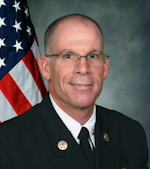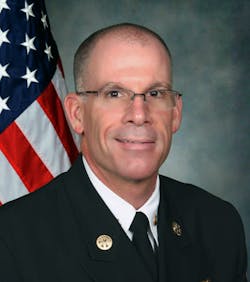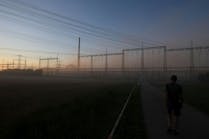The Toxic Soup of the Modern Fireground
If you’ve attended a fire service conference, a training seminar or simply sat at a firehouse kitchen table and chewed the fat with a few firefighters sometime in the last five years, you’ve likely heard someone say, “It’s not your grandfather’s fireground anymore.” In most cases, this phrase is used to refer to the changing dynamics of the modern fireground and the ever-increasing heat release rates of synthetic fuels. It may not seem as “sexy” as the tactical discussions that typically accompany a conversation about fire dynamics, but the effects of burning synthetic fuels on the health and safety of firefighters is something we should all be talking about.
For years the most prominent and feared byproduct of incomplete combustion was carbon monoxide (CO), a colorless, odorless gas that can be deadly, even in small quantities, as it replaces oxygen in the bloodstream. Today, the synthetic fuels of modern furnishings (PVC piping, household vinyl, wiring, etc.), when burned, produce a “toxic soup" that includes the likes of hydrogen cyanide and phosgene gas among many others, imposing a whole new list of hazards on the health and safety of firefighters.
Thankfully, to the credit of many (firefighters, fire officers, instructors), we’ve made great strides in requiring the use and application of SCBAs to protect ourselves from the inhalation hazards of the modern fireground. In fact, in 1981, the NFPA reported 17,800 cases of smoke inhalation among firefighters. In 2013, there were only 1,475 cases reported—a reduction of more than 92 percent of smoke inhalation injuries among firefighters. So we can rest easy, problem solved, right? Not so fast.
The unfortunate truth is this: The threats we face on the modern fireground, above and beyond the effects of thermal insult and rapid fire development, may not be limited to inhalation hazards; they may be far more complex than what has been previously known and/or discussed.
In June I had the opportunity to attend the initial phases of research being conducted by the Illinois Fire Service Institute (IFSI) in partnership with UL, NIOSH, Skidmore College and the University of Illinois, Chicago. The research involved a series of live-fire scenarios in which firefighters performed the standard duties of forcible entry, initial attack, ventilation, search and rescue, and overhaul. Upon completion of their assigned tasks, the participants were directed to an isolated area for medical evaluations, skin swabbing, gear analysis, etc. The goal of each test/analysis was to determine the chemical and heat exposure levels for each assigned task and the physiological effects of each level of exposure.
What makes this research so unique is that for the first time, thanks to the cooperative efforts of those involved, this research seeks to combine the hazards of the modern fireground (heat and toxic gases) and relates them directly to our most common tactical operations and the health and safety of firefighters.
While the results are likely far from being finalized, there are a number of critical points for us to begin to consider. First and foremost, what are we willing to do to control and/or prevent these potentially harmful exposure levels?
Will the findings of this research require us to pursue changes to our personal protective ensemble (i.e., improving THL ratings, developing removable outer shells)? Will on-scene PPE decon and firefighter decon become the new buzz words of firefighter health, safety and survivability? Will apparatus modifications be created to prevent firefighters from being exposed to the hazards of off-gassing gear and equipment while riding in the passenger compartments of our apparatus? Will our operational deployments and task assignments be modified to control and/or prevent harmful exposure levels?
As we await the results of the research, I encourage each of you to give consideration as to how the effects of chemical and heat exposure may relate to the disturbingly high number of heart attacks among firefighters. On average, 50 percent of all firefighter fatalities are heart-related. Further, we should not lose site of the alarming number of cancer diagnosis/deaths among firefighters in recent years. In Boston, 20 firefighters are diagnosed with cancer each year. In Chicago, 27 active firefighters have died in less than three years. And in Miami, between 2008 and 2010, 32 percent of firefighters were diagnosed with some form of cancer.
Today’s fireground is indeed much different than that of our grandfathers, and we must make a conscious effort to, where possible, limit the unnecessary exposure to these ever increasing toxins and thermal extremes.
If our firefighters are indeed our most precious assets, it’s up to us to follow the research and prepare ourselves for the necessary changes.

Timothy E. Sendelbach | Editor-in-Chief
Timothy E. Sendelbach is a 30-year student and educator of the fire and emergency services, and former editor-in-chief for Firehouse. He has served as an assistant fire chief with the North Las Vegas, NV, Fire Department, as the chief of training for Savannah (GA) Fire & Emergency Services and as assistant fire chief for Missouri City, TX, Fire & Rescue Services. He is a credentialed Chief Fire Officer and Chief Training Officer and has earned a master’s degree in leadership from Bellevue University, bachelor’s degrees in fire administration and arson and an associate’s degree in emergency medical care from Eastern Kentucky University.






